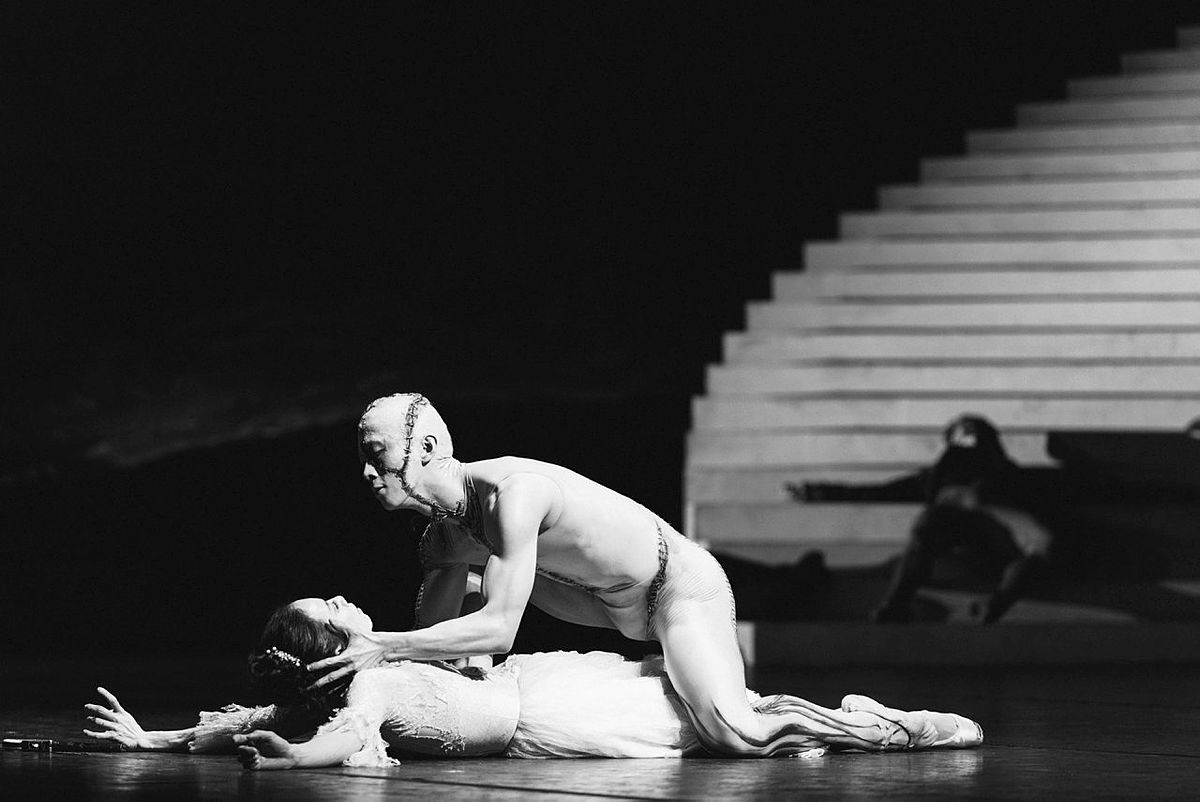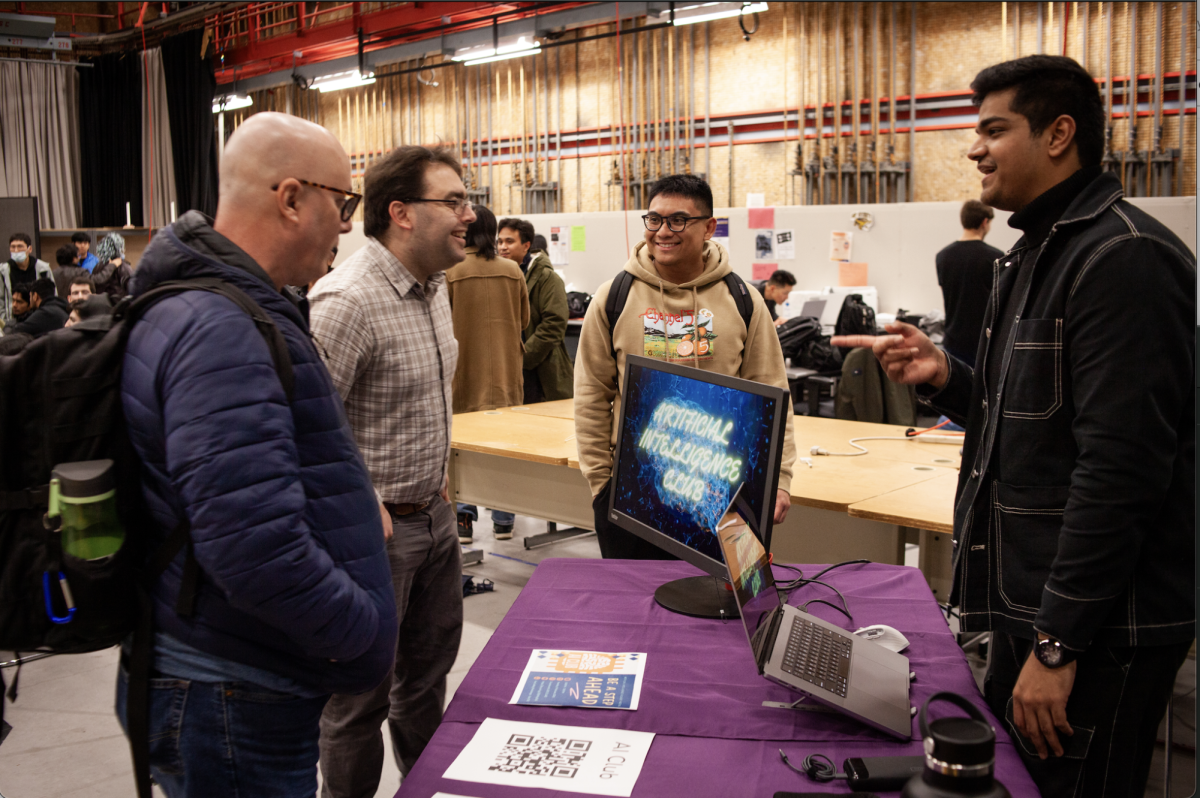Eerie whispers of wind slowly creep into the audience’s ears as figures of life and death from the 20th century make their way like zombies onto the stage. A milkmaid in a white and brown tattered dress groans and moans while crawling out of the floor. A person wrapped in tissue like garments ambles back and forth behind a worn down black gate carrying three dried wreaths. Looking from the outside, a young boy hopes for riches and to find answers to life’s unanswered questions only to uncover layers of betrayal and come face to face with his hell.
After many years of anticipation, August Strindberg’s play, “The Ghost Sonata” debuted last week at SF State’s Little Theatre with collaboration from directors and professors John Wilson and Florentina Mocanu-Schednel in SF State’s School of Dance and Theatre.

“It’s honestly been chasing me for years. I encountered it for the first time when I was in undergrad and then in grad school and then again when I moved to SF,” said John Wilson, co-director of Ghost Sonata and professor at SF State’s School of Dance and Theatre Department. “I encountered it again as the opera and so now finally I have the opportunity to work on it, and it’s a real privilege to direct it.”
After about 25 years of teaching, Wilson was able to co-direct the production with another professor from the department. Without hesitation, Florentina Mocanu was more than willing to join the project and be a part of the artistic and educational collaboration with students.
“Directing with John Wilson becomes a process of creative, rigorous conversations, informed by our passion for experimental theatre,” said Mocanu. “Professor Jo Tomalin — designer of movement and voice for this production — was a force in sculpting the physicality of the show.”
Stringberg’s 1907 play, which follows the three-part structure of a sonata, “The Ghost Sonata,” is considered to be one of the best of his “Chamber Plays.” The play, set in Stockholm, Sweden, follows the protagonist, Mr. Arkenholz as he becomes mesmerized by a mansion and
encounters Jacob Hummel, a director who knew Mr, Arkenholz’s father. Both characters are invited to enter the mansion and soon Arkenholz realizes everything is not what it seems.
“This show can be hard to explain. The best way I can explain it is that we follow a family of strangers. A group of people who are all connected by one betrayal or another,” said Scalzo. “We watch their lives unfold and the consequences they endure based on their decisions.”
The play conveys the eagerness of a young student’s curiosity about the truth of life and love through mythology, spirituality and imagination. Arkenholz, also known as the student, romanticizes the mysterious occupants of a house and once inside, the house, the inhabitants and the surrounding objects test the student’s senses. To the end of the play, reality, truth, knowledge, love, renewal, class structure, access, health, crime, emancipation/gender equality, justice, dreams, imagination, life and death remain intertwined.
“In total, the rehearsal process took about four months. A show like this gives students the opportunity to perform and learn from a different style of theatre,” said Adrianna Scalzo, stage manager for the production. “This show in particular is more dramatic than some of the other shows that we have put together. It also allows our technical design students to create something completely different.”
Planning, auditions and casting for the two-week run production began last semester and since the first run through, the cast rehearsed three to four evenings a week. The production team consists of three professors and six students.
Inspired by Beethoven’s “Piano Sonata Number 17 in D minor,” Strindberg’s play is particularly special because “a student in 1907 Stockholm serves as a kinetic provocateur for students in a 2019 San Francisco,” said Mocanu. “Hopefully the play will generate countless questions within us that will lead to positive actions and truthfulness.”
“The Ghost Sonata” made its way around the world and finally landed on SF State’s stage. The creative collaboration between students and staff made it possible for students in this generation to understand the complexities of Strindberg’s imaginative work.
“This is an important play in theatre history of 18th, 19th and 20th century and considered one of the important pieces of dramatic literature,” said Wilson. “I can’t think of a better way to spend an evening then to see a live theatre production with full sets of costumes and lighting, produced here at SF state.”
Location: San Francisco State’s Little Theatre in the Creative Arts Building
Tickets will be $8 for students and $10 for general admission












